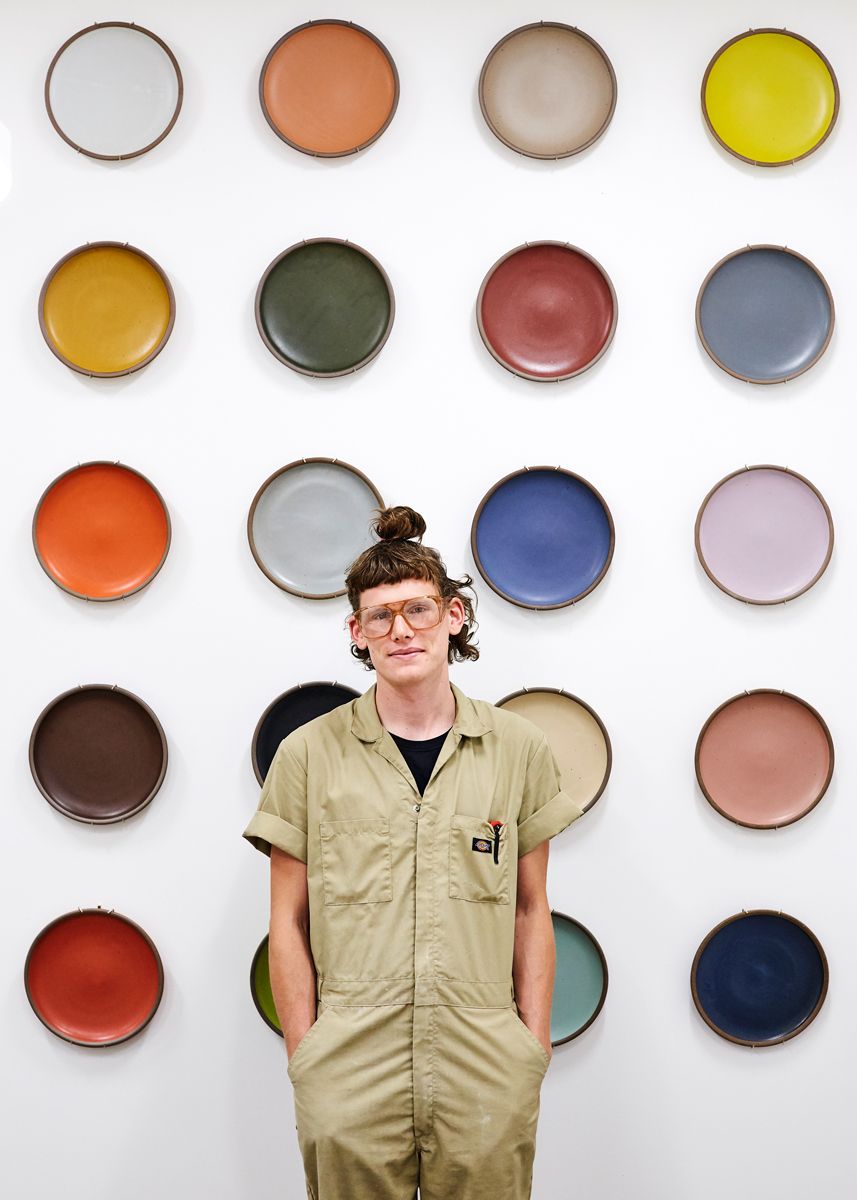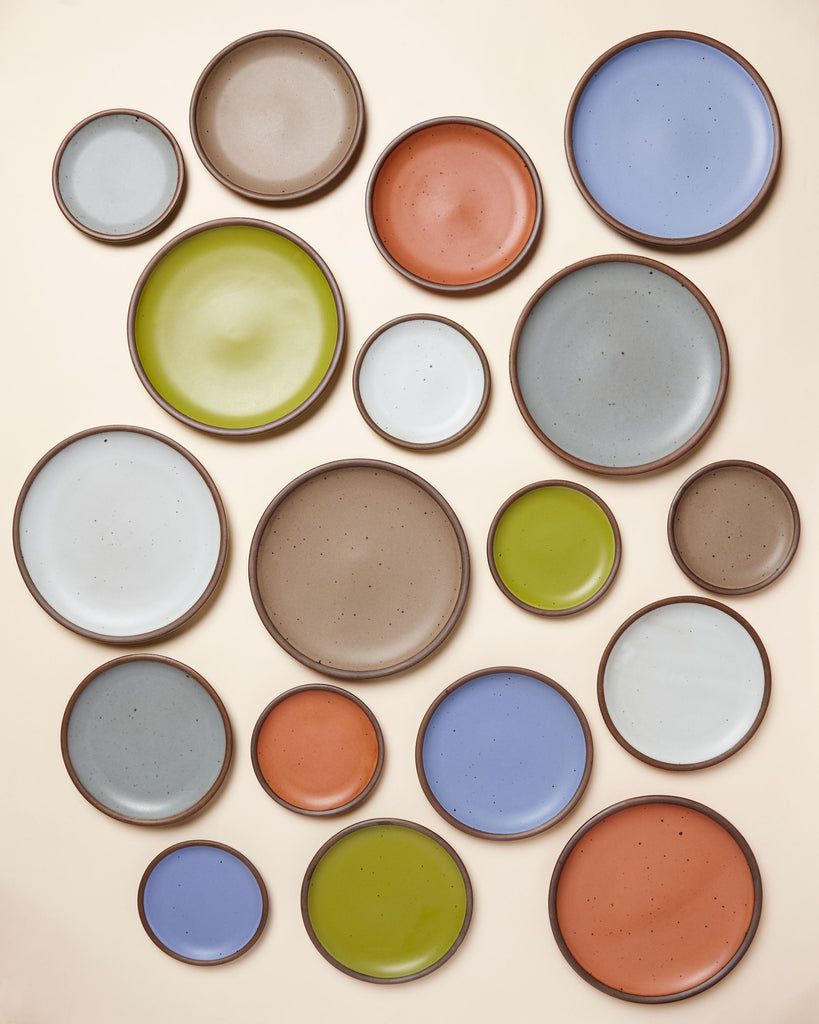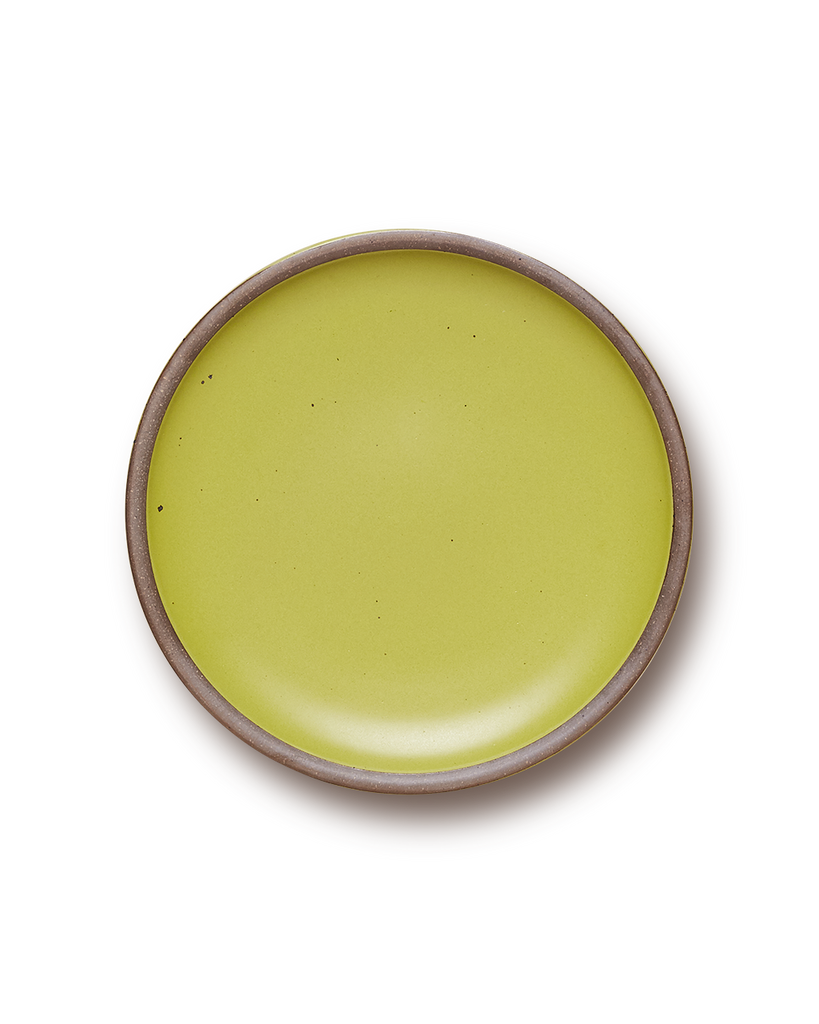
My Chemical Romance: Glazing 101 with Kyle Crowder
What exactly is glaze made of? Why is it so hard to make a fluorescent fuchsia colored Dinner Plate? What on earth is a flux? These are the pressing questions we hope to answer as we open up the Big Book of Ceramic Glaze Chemistry with our resident self-taught glaze chemist, Kyle Crowder.
Ceramic glazing is true Bill Nye territory—full of complexity and nuance. Formulating a glaze color is like mixing paint, but with finicky variables that seem almost alive: metals, chemicals, heat, glass, and colorants. If this is sparking a fright-inducing reminder of a science class you flunked, let’s slow down and take it molecule by molecule. First, what is glaze and how does it work?

You can think of a ceramic glaze as being a combination of two halves—a base and its additions. The base is a clearish liquid full of “fluxes.” Fluxes are materials that catalyze the melting of silica and alumina, which are glass formers and stabilizers respectively. The second half of the glaze contains the colorants, which are typically transition metals like copper, cobalt or zinc. Our glazes are mostly base glaze, with anywhere from 1-10% colorants, but think of these aggregates as being inextricably linked in the way that a glaze’s color is determined by how they all interact.
When you are mixing paint, everything sort of turns out how you’d expect, and if you passed the first grade you can confidently deduce that when you mix red and blue you’re gonna get purple. Glazes are a little different. Once heat enters the equation, molecules begin to melt, meld, attach and change, affecting the glazes’ final color. The same goes for oxygen, or the lack thereof. In the glaze world, color can be thought of more as an effect of altering molecules, rather than pigments combining.
Our Glaze Chemist Kyle Crowder explains, “Copper carbonate is a bright blue powder, but if you put it into a glaze and starve the kiln of oxygen, you get red. When silicon molecules and copper hang out together, coupled with a lack of oxygen, it changes the shape of the molecule and therefore presents a different color. If you take that same glaze and fire it in an oxidized atmosphere where there is enough oxygen to touch the glaze, it will come out green. The copper and silicon that was attaching a certain number of oxygen to its molecule, now attaches a different number of oxygen and reflects a different color.” Basically, it’s a real crapshoot if you don’t cross every t and dot every i.

Before anyone gets mixing, we get ideating. Our CMO, Connie Matisse, is the color brains and decision maker on what seasonal glazes will be. The decision involves a little bit of “because we love it” and a little bit of giving the people what they want. And maybe some creative divinity. Once we confirm that we have, say, a Millennial Pink, we bring our creative heads to the lab where Kyle conducts a long winded series of tests, until the color is perfect as pie.
Kyle has been doing this for 4 years now and they’ve learned a thing or two. They say, “We have a collection of stains and raw oxide metals that I know work well with our base glaze and I have an idea of what colors they can create. It’s like mixing chemicals that I know will react in a certain color way.” Once the more granular parts of glaze composition are theorized and understood, they get the ball rolling on some quad blends.
“I’ll do a quad blend—four starting points in each corner—one might be a fully saturated blue, one a half saturated blue, one is white, and one is red. As you blend each one successively with the next one in the quadrant, you create these line blends going all the way around and corner to corner, and then if you point to one you like, it’s easy to calculate the recipe for the color. The quad blend looks like a gradient. We pick one, and start the process over again. Like, what does that look like if we add more opacity? We often add more opacity because Connie’s often drawn to saturated colors that are slightly subdued. Zircon or tin give it that look.”

Are you an abstract splatter painter devoted to whim? You might want to plug your ears. Because of the powerful influence of slight variables like temperature, oxygen levels, and the romance between molecules to completely alter a color, we have to engineer as much chance out of the process as possible. We do this so that when you order a Soapstone Bowl later tonight, get it, love it, and order another one months later, they match as closely as they can. The process of formulating glazes—while very creative— requires a solid understanding of chemistry, theory, and testing. And even if you think you have ALL your variables covered, things surprise you.
Let’s take Celery, for example. A good surprise! As mentioned before, we all know that adding blue paint into a glob of yellow paint and stirring it up will make green paint. But, in the world of ceramics, where molecules are changing and clinging and doing all kinds of funky stuff in the high temperatures of the kiln, that isn’t always the case. So for Kyle, our glaze chemist, it was quite a “breakthrough” (their words) when they were experimenting with Celery to find that if you combine a yellow stain and a blue stain, that it will actually turn green. As they describe it, “In pottery, 1+1 almost never equals 2—but this time it did.”
The reason that it worked is this: When you encapsulate a pigment, the actual pigment does not dissolve into the other part of the glaze, where it would be subject to molecular change, but it is suspended and locked within glass. If you were to look at a copper glaze under a microscope, you would see dots of copper, even though the materials that went into it were blue and red pigment. But, if you looked at your Celery plate under a microscope, you would see tiny blue and yellow dots sitting closely next to each other. The distance and scale causes your eye to see green. Science is magic.

